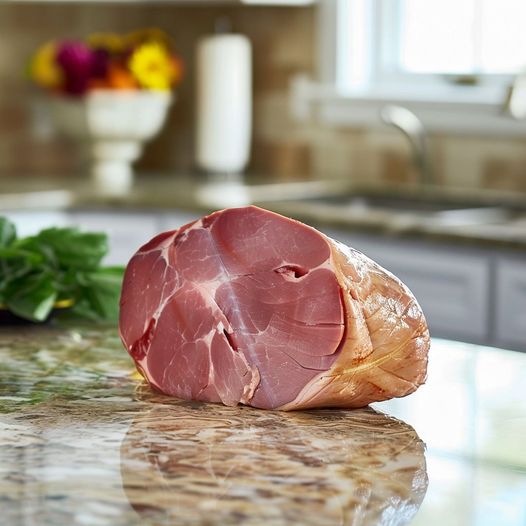ADVERTISEMENT
Food safety is vital to maintaining good health, and it always helps to know the ins and outs of proper food storage practices to prevent foodborne illnesses. One common issue in household kitchens is the proper handling and storage of meats, such as ham, which are particularly susceptible to bacterial growth when left unrefrigerated. If not stored correctly, the safety and edibility of meat can quickly become compromised.
Join us as we discuss what happens when a frozen ham is left out on the counter for an extended period and the potential implications it may have on your well-being.
Understanding the Risks of Improper Meat Storage
It's important to understand why it is unsafe to consume meat that has been improperly stored for long periods. Here’s what you need to keep in mind:
1. Temperature Danger Zone: The temperature range between 40°F and 140°F is known as the "danger zone" for perishable foods. This is because these temperatures are ideal for bacterial growth. Food should not be left out at room temperature for more than 2 hours.
2. Bacterial Growth: If ham is left out, bacteria such as Staphylococcus aureus, Salmonella Enteritidis, Escherichia coli, and Campylobacter can multiply to dangerous levels, possibly leading to food poisoning.
3. Food Poisoning Symptoms: Consuming food that has experienced significant bacterial growth can result in symptoms that include stomach cramps, nausea, vomiting, diarrhea, and fever. These symptoms can appear as quickly as a few hours after eating the contaminated food.<!--nextpage-->
Assessing the Safety of the Ham
Given that the ham has been left out on the counter for five days, much longer than the recommended two hours, here is a concise assessment:
1. After five days at room temperature, the ham is undeniably unsafe to eat. The risk of foodborne illness is high due to the prolonged period within the "danger zone" where bacteria proliferate.
2. The best course of action is to dispose of the ham immediately to avoid any health risks. Bacteria could be present even if the ham does not show visible signs of spoilage such as an off smell or mold.
3. It should be emphasized that cooking the ham to "kill bacteria" is not an option at this point; some bacteria produce toxins that are heat-resistant and not destroyed by cooking.
Preventive Measures for the Future
To prevent such an event from happening again, consider taking these precautionary steps:
1. Always refrigerate perishable food within 2 hours, ensuring that your refrigerator temperature is below 40°F and your freezer is set to 0°F or below.
2. If thawing meat, do so in the refrigerator, in cold water, or in the microwave, but never at room temperature on the countertop.
3. Educate all family members, including your hubby, about the importance of proper food storage to avoid similar mishaps.
4. Use labels and date perishable items, so it becomes easier to track how long they have been stored, and to use them safely within an appropriate timespan.
In summary, while it can be frustrating to discover that food has not been stored properly, it is imperative to prioritize health and safety by disposing of the ham. Not all is lost, though. This situation can be a valuable lesson in food safety practices to ensure such mistakes are not repeated. Always remember, when in doubt, throw it out!
ADVERTISEMENT
